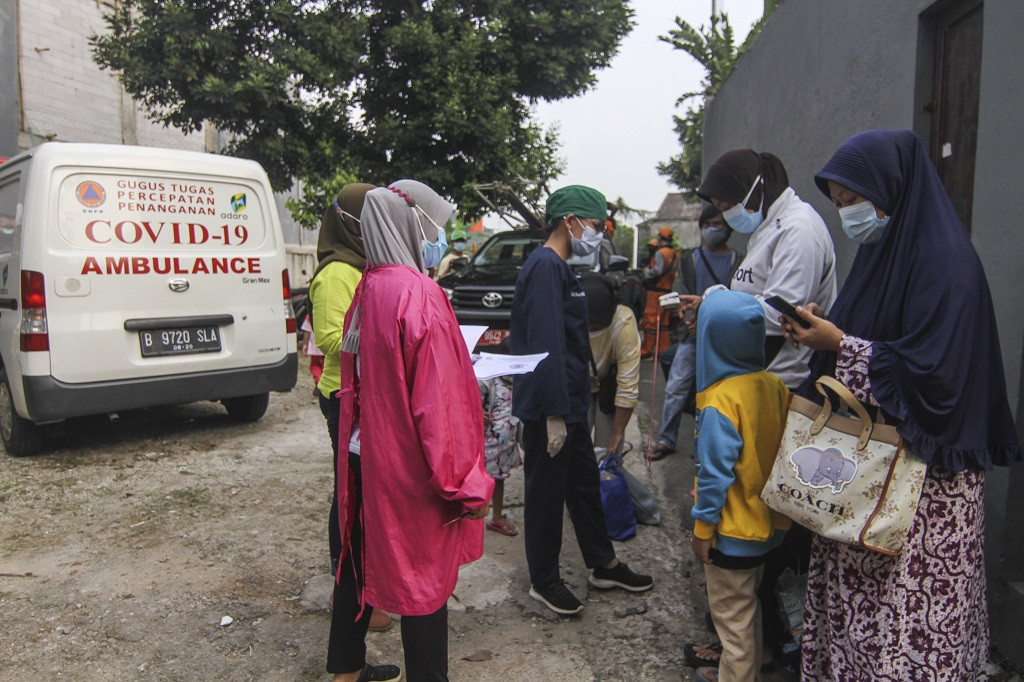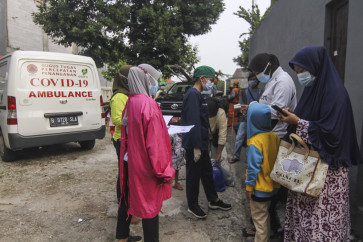Popular Reads
Top Results
Can't find what you're looking for?
View all search resultsPopular Reads
Top Results
Can't find what you're looking for?
View all search resultsCOVID-19 data gaps persist over year into outbreak
Over a year into the COVID-19 pandemic, Indonesia is still struggling to present real-time, consistent data on cases and fatalities related to the disease.
Change text size
Gift Premium Articles
to Anyone
 A health worker in Cipayung, East Jakarta writes down the names of people that are going to be taken to the COVID-19 emergency hospital at Wisma Atlet in Central Jakarta on May 21, 2021. Health authorities recorded a rise in daily new cases and new clusters after the Idul Fitri holiday on May 13. (Antara/Asprilla Dwi Adha)
A health worker in Cipayung, East Jakarta writes down the names of people that are going to be taken to the COVID-19 emergency hospital at Wisma Atlet in Central Jakarta on May 21, 2021. Health authorities recorded a rise in daily new cases and new clusters after the Idul Fitri holiday on May 13. (Antara/Asprilla Dwi Adha)
O
ver a year into the COVID-19 pandemic, the government is still struggling to present real-time, consistent data on cases and fatalities related to the disease.
Data discrepancies can be seen in case and fatality numbers, between those provided by cities and regencies and those by the provincial administrations and the central government, with the gaps reaching to the thousands.
Central Java, for instance, has reported on its website more than 202,600 total confirmed cases so far with more than 12,800 deaths. But the central government had only reported over 9,100 deaths in the province as of Sunday, representing a gap of 3,600.
The province is currently experiencing a spike in cases in some of its regions, with some hospitals in Kudus facing bed occupancy rates of around 90 percent. But while the provincial website announced 550 new cases on Sunday, the central government reported 1,000 new cases in the region on the same day.
In Yogyakarta, the number of COVID-19 cases accumulated from the websites of its five regencies and cities as of Sunday reached around 46,000 -- about 1,400 higher than roughly 44,500 cases reported by both the Yogyakarta provincial administration and the central government on the same day. This was bigger than a gap of around 1,200 observed on May 20. Data on deaths as of Sunday also differed, with the provincial administration recording almost 250 more deaths than the central government at around 1,400 fatalities.
Ronald Bessie, the data coordinator of crowdsourced database KawalCOVID-19, said his team had compared data from the central government down to the level of cities and regencies and used only the data that showed the highest number of cases in a certain region. Through this, it found that Central Java may have 240,000 cases already, while West Java, which is currently recorded as having over 4,000 deaths, may actually have over 6,800, he said.
"Differences would be okay if the gap was small. But if the gap is big, we won't know how serious or how good the situation actually is," he told the Post last week.
















